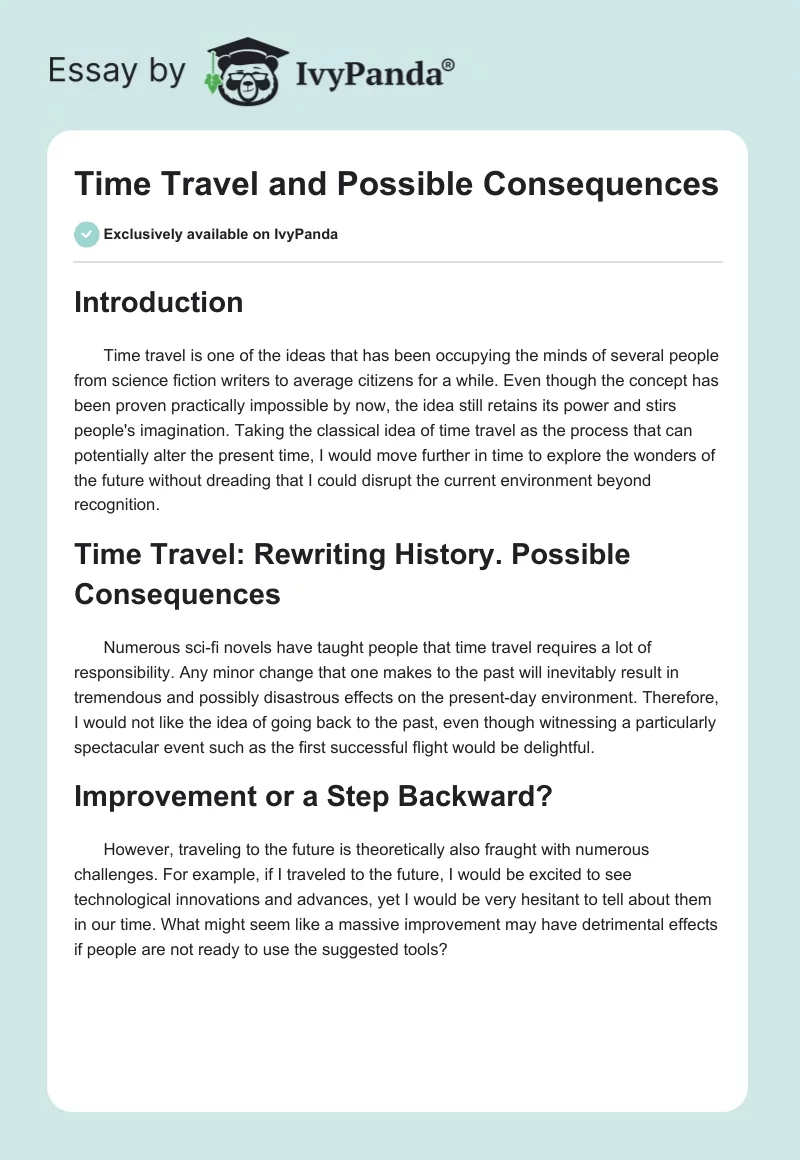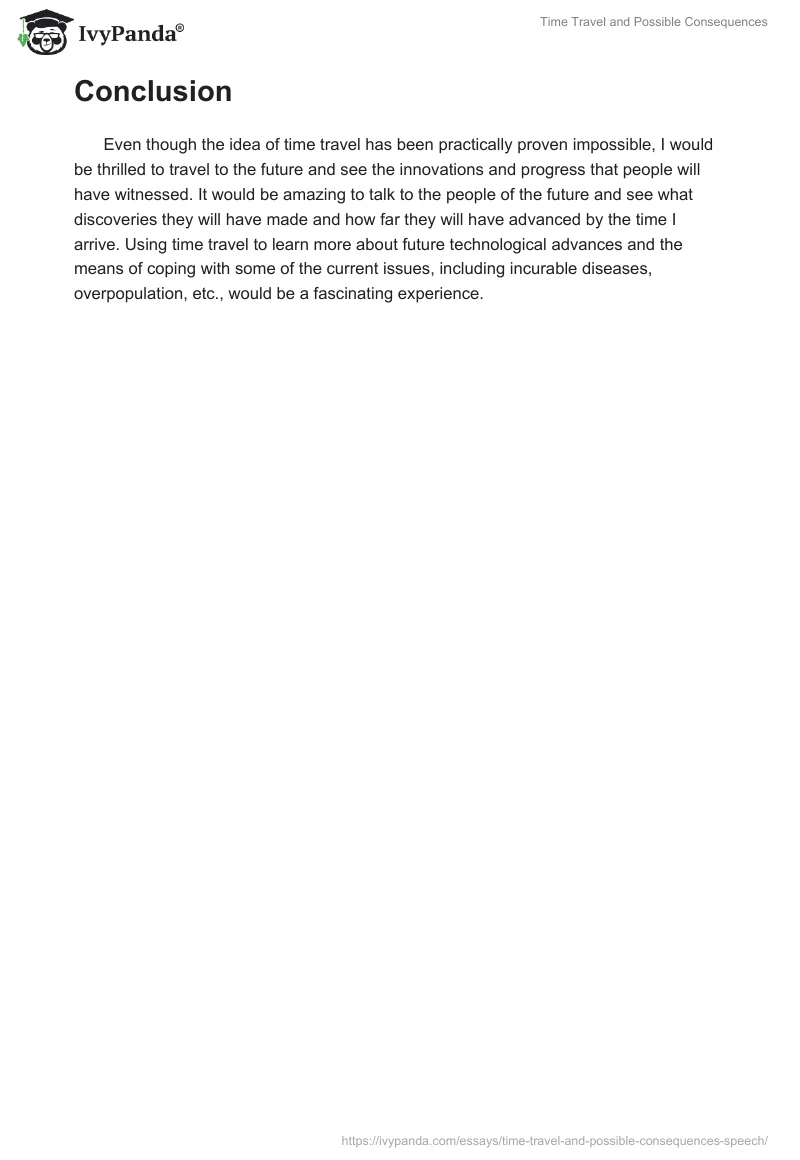Introduction
Time travel is one of the ideas that has been occupying the minds of several people from science fiction writers to average citizens for a while. Even though the concept has been proven practically impossible by now, the idea still retains its power and stirs people’s imagination. Taking the classical idea of time travel as the process that can potentially alter the present time, I would move further in time to explore the wonders of the future without dreading that I could disrupt the current environment beyond recognition.
Time Travel: Rewriting History. Possible Consequences
Numerous sci-fi novels have taught people that time travel requires a lot of responsibility. Any minor change that one makes to the past will inevitably result in tremendous and possibly disastrous effects on the present-day environment. Therefore, I would not like the idea of going back to the past, even though witnessing a particularly spectacular event such as the first successful flight would be delightful.
Improvement or a Step Backward?
However, traveling to the future is theoretically also fraught with numerous challenges. For example, if I traveled to the future, I would be excited to see technological innovations and advances, yet I would be very hesitant to tell about them in our time. What might seem like a massive improvement may have detrimental effects if people are not ready to use the suggested tools?
Conclusion
Even though the idea of time travel has been practically proven impossible, I would be thrilled to travel to the future and see the innovations and progress that people will have witnessed. It would be amazing to talk to the people of the future and see what discoveries they will have made and how far they will have advanced by the time I arrive. Using time travel to learn more about future technological advances and the means of coping with some of the current issues, including incurable diseases, overpopulation, etc., would be a fascinating experience.


